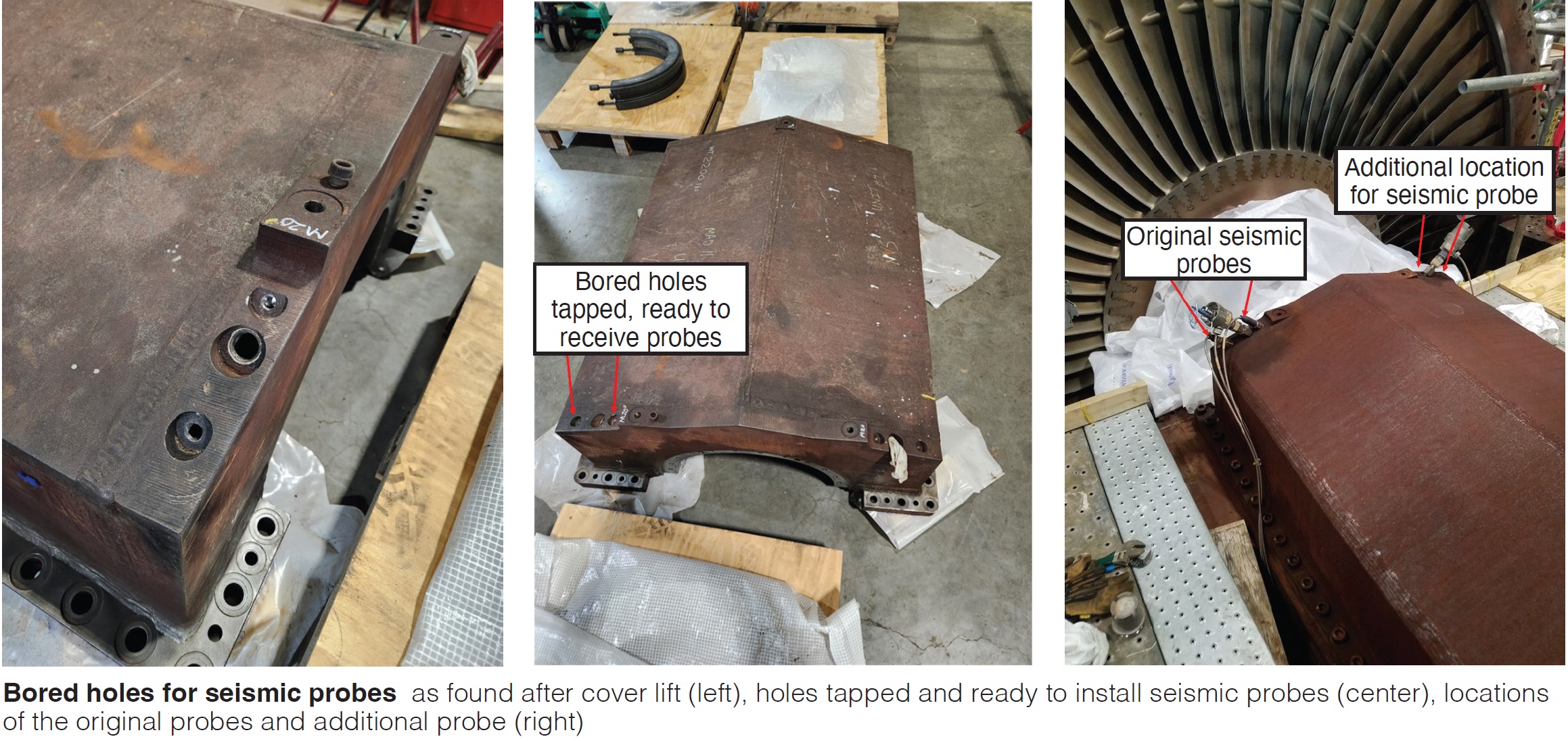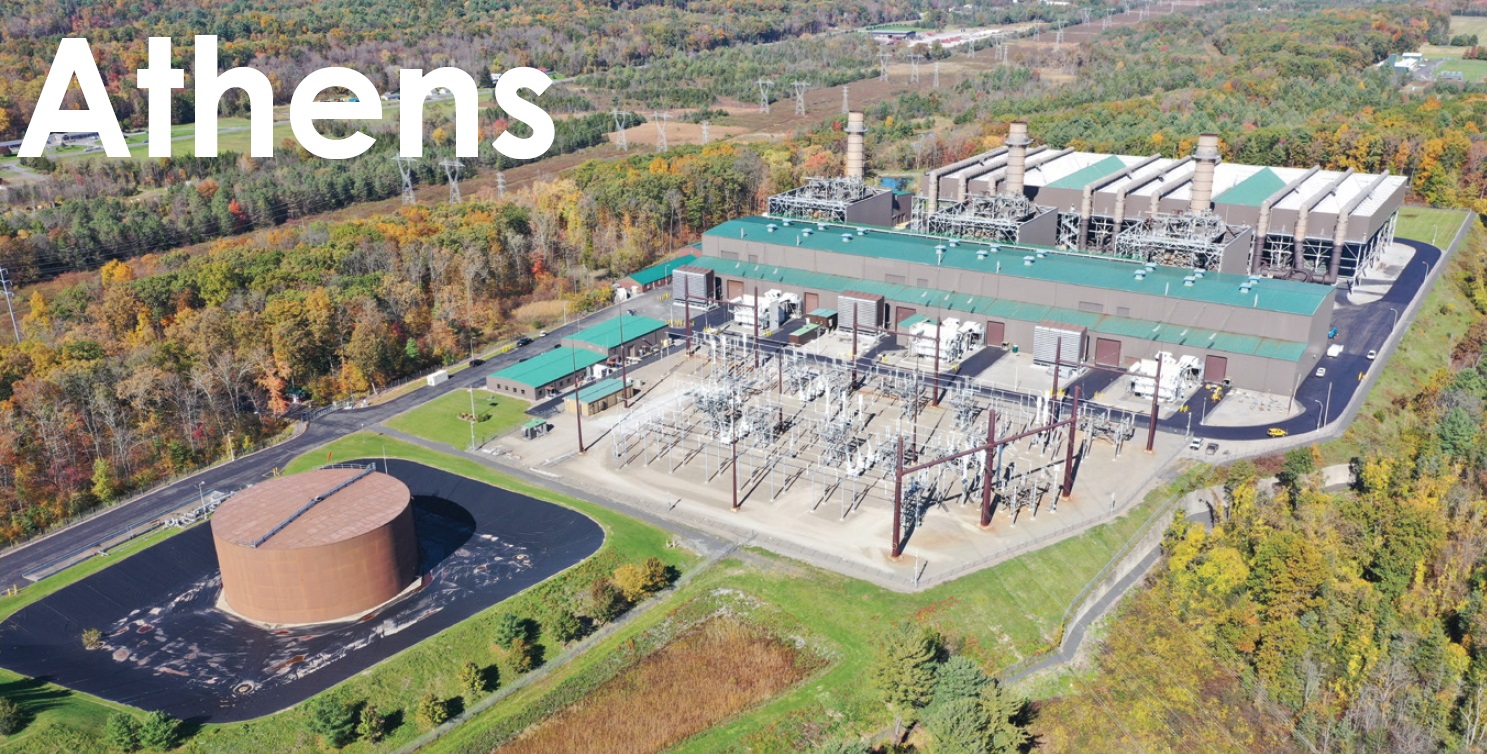Athens Generating Plant
Owned by Kelson Energy
Operated by NAES Corp
1080 MW, gas-fired facility equipped with three 501G-powered 1 × 1 combined cycles, located in Athens, NY
Plant manager: Steve Cole
Mod eliminates doubts regarding the accuracy of vibration readings
Challenge. New Athens Generating has had issues in the past with vibration readings on the steam turbine’s (ST) MAD11 bearing. The seismic probes on MAD11 are under the turbine’s cover, so the only way to access them is to do a complete cover lift and change out the probes, which is neither quick nor easy; not to mention the down time costs and cost of repair.
Solution. During a major overhaul of the Unit 3 E steamer (a/k/a Siemens/Westinghouse IP/LP turbine), Athens personnel investigated the location of the seismic probes and noticed bored holes next to the existing probes. Staff decided to tap the existing bored holes and order four new seismic probes—two to replace the run-time probes and two to install in the bored holes once they were tapped.

The plan was reflected in a Management of Change (MOC) documentation and reviewed and approved accordingly. The MOC was to be implemented on ST1, which was next in line for a major overhaul.
The new probes were installed during the major overhaul on Unit 1 in accordance with the plan. The additional probes were wired to the Bently rack with the use of an additional 42M card, and the Bently was programmed to accept the new points. In the logic for the ST, the additional probes’ feedback will only be used as a readout, and not in the trip schematic. The probes are used strictly as a backup in case a sensor fails; the logic remained that two seismic exceedances will cause a trip.
Results. By installing the new probes, Athens removed a single-point-of-failure concern and the risk of having to force points if a probe goes erratic from a faulty signal. Plan is to implement the same solution on Units 2 and 3 the next time there is a cover-lift/major-interval opportunity.
Project participants:
Athens I&C technicians
Plant management
SCR vaporizer rebuild improves system performance
Challenge. Athens staff was concerned about the accuracy of vaporizer outlet temperatures for the SCRs (selective catalytic reduction) serving the plant’s three units. On startup, or during large load changes, vaporizer outlet temperature typically would drop considerably, possibly causing it to go so low that it would trip the ammonia block valve. That would require operator input, to manually reopen the valve and make necessary adjustments. Staff decided to inspect the vaporizers and compare their readings to the original specs.
Solution. During the fall 2023 outages, plant personnel opened and inspected the vaporizers for all three units. The findings: Units 1 and 3 were up to OEM specs, but Unit 2 revealed a couple of concerns. For example, the level of the pall rings was at, or slightly below, the ammonia injection rings, and the outer ammonia injection ring was bent down, causing a central injection area.
Thus, the ammonia being injected was not being properly mixed with the gas-turbine exhaust because there was no “agitation” from the pall rings above the ammonia injection ring. Athens decided to rebuild the vaporizer on Unit 2 using OEM resources. On disassembly, technicians found that the expanded metal holding the pall rings off the bottom of the tank was badly deteriorated.
Results. The vaporizer was rebuilt with new pall rings, stainless-steel expanded metal, stainless-steel ammonia injection rings, and more supports under the injection rings to prevent the outer ring from being bent down again. During the first startup after the repairs were made, Athens monitored the vaporizer outlet temperature. It remained above the valve trip-point and showed considerable improvement in reactions to load. Additionally, Athens is planning to move the vaporizer outlet thermocouple down the pipe about 6 ft as recommended by the OEM.
Project participants:
Athens I&C technicians
Athens maintenance team
Plant management






